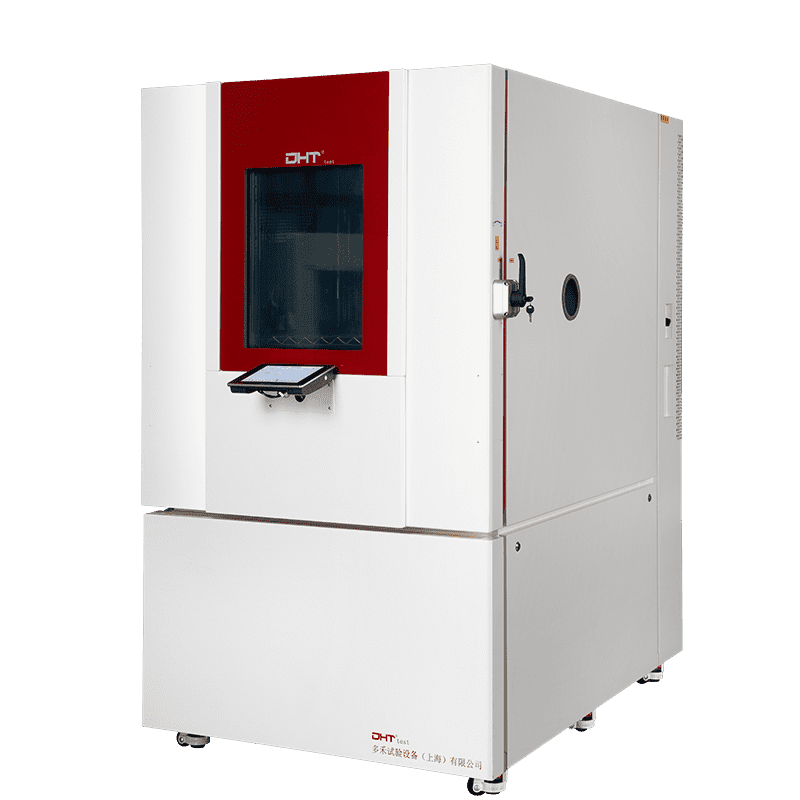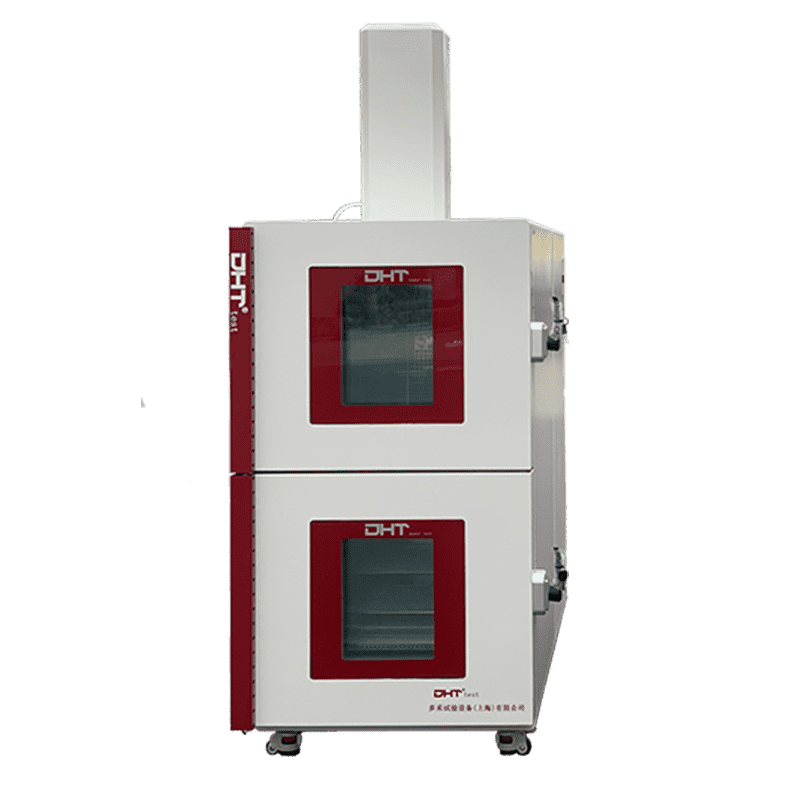Written by Robin
Senior Engineer, Doaho Test (DHT®)
In industries such as advanced electronics, new energy, and aerospace, the thermal shock chamber has become essential for product reliability testing. However, many users notice that during heavy usage, the chamber’s compressor undergoes frequent cycling, high energy consumption, unstable operation, and escalating maintenance costs—and in some cases, premature compressor failure.
As the most critical component of a thermal shock chamber, the compressor’s health directly impacts system stability and total lifecycle cost. So how can compressor wear be reduced? How can control strategies be optimized to effectively prevent unnecessary start-stop cycles?
This article draws on the principles of thermal shock testing and real-world engineering experience to present three practical and effective optimization strategies designed to protect your equipment and enhance efficiency.
Why Compressors in Thermal Shock Chambers Wear Out Quickly
Thermal shock testing subjects a sample to extremely rapid temperature changes—from high (e.g., +150 °C) to low (e.g., –55 °C)—to simulate real-world thermal stress. The compressor is responsible for achieving and maintaining the cold zone, and to meet standard requirements like “temperature transition ≤ 10 seconds” and “recovery ≤ 5 minutes,” it must cycle rapidly to maintain target temperatures.
When control logic is poorly configured or cycle timing is too aggressive, compressors often experience:
-
Excessively frequent on-off cycles
-
Short run durations that undermine proper lubrication
-
Direct restarts from high-pressure states, causing mechanical shock
-
Thermal overload due to unmatched operating load and heat rejection
Over time, these conditions drive up energy consumption, shorten compressor lifecycle, increase service costs—and can even lead to premature failure.
Step One: Optimize Cold-Zone Control Logic
Improving control strategy is the first line of defense for compressor health.
Common Pitfalls:
Some entry-level thermal shock chambers initiate next-phase transitions before the cold zone stabilizes, or the timing between cycles is too short. This leads to continuous temperature chasing by the compressor, causing wear and decreasing lubrication efficiency.
Optimization Measures:
-
Enforce a stabilization period: Require the cold zone to remain within ±1 °C of the target for a sustained 2–3 minutes before proceeding to the next cycle.
-
Implement compressor delay logic: Force a minimum continuous runtime (e.g., 3 minutes) and enforce a minimum off interval (e.g., 5 minutes) between cycles, ensuring oil circulation stabilizes.
-
Use adaptive temperature profiling: Dynamically adjust the cooling curve based on sample heat load and environmental conditions to avoid overshooting or repeated temperature correction loops.
By intelligently managing temperature recovery and test pacing, you can maximize compressor lifespan in a streamlined, low-cost manner.
Step Two: Redesign System Architecture with Thermal Buffering
Most conventional thermal shock chambers use a two-zone structure that alternates sample placement between hot and cold zones. This architecture forces the compressor to constantly respond to drastic temperature swings in the cold zone.
Structural Improvements:
-
Adopt a three-chamber design: Introduce an intermediate “testing chamber” where hot and cold zones remain stable and separate. Compressor cycles no longer need to respond to sudden sample insertion, significantly reducing load fluctuation.
-
Pre-cool buffer zone: Higher-end units typically initiate a pre-cooling phase before cycle transition to avoid spikes in temperature differential and instantaneous cooling demand.
-
Distribute thermal loads evenly: Optimize sample placement on shelves to spread heat more uniformly, preventing sudden thermal spikes that stress the compressor.
Although these enhancements carry higher upfront costs, they deliver long-term ROI through improved energy efficiency and reduced maintenance in frequent-use environments.
Step Three: Upgrade to Smart Inverter and Energy Control Systems
Many chambers still rely on fixed-speed compressors, which are simple and inexpensive but lack the ability to modulate cooling power according to real-time demand.
Recommended Upgrades:
-
Switch to inverter-driven compressors: These provide smart speed regulation, reducing the pulse load impact on the compressor and smoothing operational profiles.
-
Implement intelligent energy-control logic: Use real-time feedback (e.g., ambient temperature, sample thermal load) to optimize compressor operation and reduce energy waste.
-
Enable stage-based load management: Automatically reduce output during low-load or holding phases, greatly improving operational efficiency.
These advanced controls are especially valuable in mid-to-high-end chambers, delivering extended compressor life and reduced power draw without compromising test accuracy.
Conclusion: Protecting Compressor Health Is Critical to Chamber Longevity
Thermal shock chambers, with their intense and rapid operating demands, place significant stress on compression systems. Replacing parts or swapping compressors alone won’t solve the wear issue. What’s needed is a holistic approach—including:
-
Optimized control logic to reduce unnecessary cycling
-
Enhanced structural design to stabilize thermal load
-
Upgraded energy systems for intelligent, demand-based operation
For frequent-use environments, this holistic approach is both a maintenance philosophy and a strategy for enhanced system resilience.
At DHT®, our development philosophy focuses on structural loss reduction and control optimization. We offer high-reliability, low-maintenance thermal shock solutions designed to extend compressor lifespan and reduce total cost of ownership. If you’re looking for a thermal shock chamber that delivers energy efficiency, longevity, and precision control, reach out to our technical consultants for tailored guidance and custom solutions.
👉 To learn more about common issues and solutions, check out our article: How to Troubleshoot Thermal Shock Test Chambers? High-Quality Thermal Shock Chamber Recommendations


